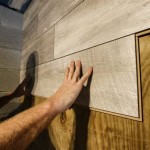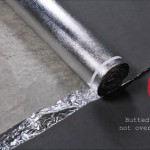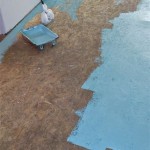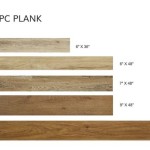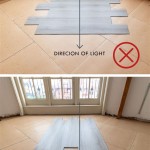Tiger Wood Bamboo Flooring Reviews: A Comprehensive Overview
Bamboo flooring has emerged as a popular alternative to traditional hardwood floors, esteemed for its sustainability, durability, and aesthetic appeal. Among the various brands available, Tiger Wood bamboo flooring stands out for its distinctive grain patterns and diverse product offerings. This article provides a thorough review of Tiger Wood bamboo flooring, examining its range of products, performance characteristics, environmental considerations, and cost-effectiveness.
The term "Tiger Wood" in the context of bamboo flooring generally refers to a specific style characterized by its variegated, striped appearance. This effect is achieved through a carbonization process, where different layers of bamboo strips are exposed to varying degrees of heat treatment, resulting in contrasting bands of light and dark tones. This unique visual texture can add character and depth to a room, making it a desirable choice for homeowners seeking a more visually dynamic flooring option.
Understanding Tiger Wood Bamboo Flooring
Tiger Wood bamboo flooring, while aesthetically captivating, requires a detailed examination of its composition, construction, and inherent properties. The production process significantly influences its performance and longevity. Bamboo, as a raw material, possesses excellent tensile strength, but its susceptibility to moisture and the methods used to transform it into flooring planks are crucial factors to consider.
Typically, Tiger Wood bamboo flooring is available in two primary constructions: horizontal and vertical. In horizontal construction, the bamboo strips are laid flat and glued together, showcasing the nodes of the bamboo stalks. This method produces a wider grain pattern, emphasizing the natural characteristics of the bamboo. Vertical construction, on the other hand, aligns the bamboo strips on their edges, creating a tighter, more uniform grain pattern. The choice between horizontal and vertical construction impacts not only the appearance but also the density and stability of the flooring.
The carbonization process, pivotal in creating the Tiger Wood effect, involves heating the bamboo strips to caramelize the sugars within the plant. While this process enhances the aesthetic appeal, it can also slightly reduce the bamboo's hardness. Therefore, it is essential to assess the Janka hardness rating of the specific Tiger Wood flooring product. The Janka hardness test measures the resistance of a wood or bamboo species to denting and wear. A higher Janka rating indicates a more durable and resilient flooring option.
Further distinctions within Tiger Wood bamboo flooring can be found in the type of finish applied. Pre-finished flooring offers convenience and consistency, as the finish is applied under controlled factory conditions. These finishes often include multiple layers of UV-cured acrylic or polyurethane, providing enhanced protection against scratches, stains, and wear. Alternatively, unfinished Tiger Wood bamboo flooring allows homeowners to customize the finish to their specific preferences, using stains and sealants to achieve the desired look and level of protection. However, unfinished flooring requires professional installation and finishing, adding to the overall cost and complexity.
Beyond solid bamboo flooring, engineered bamboo flooring is also available. This construction involves layering a thin veneer of bamboo over a core of high-density fiberboard (HDF) or plywood. Engineered bamboo flooring offers improved dimensional stability, making it less susceptible to expansion and contraction due to changes in humidity. This makes it a suitable option for areas with fluctuating moisture levels, such as basements or kitchens.
Evaluating the Performance and Durability
The performance and durability of Tiger Wood bamboo flooring are crucial considerations for prospective buyers. Factors such as hardness, scratch resistance, water resistance, and maintenance requirements all contribute to the overall lifespan and satisfaction with the flooring.
While bamboo, in general, is known for its strength, the specific construction and processing methods used in Tiger Wood flooring can influence its hardness. As mentioned earlier, carbonization can slightly soften the bamboo. Therefore, it is vital to compare the Janka hardness ratings of different Tiger Wood bamboo flooring products. Strand-woven bamboo, a type of bamboo flooring where the bamboo fibers are shredded, compressed, and glued together, typically boasts the highest Janka rating, offering superior durability and resistance to denting. However, not all Tiger Wood bamboo flooring is strand-woven, so it is essential to verify the construction type.
Scratch resistance is another critical performance characteristic, especially in households with pets or high foot traffic. The quality of the finish plays a significant role in preventing scratches. Pre-finished Tiger Wood bamboo flooring often comes with multiple layers of durable polyurethane or acrylic, providing enhanced scratch resistance. However, even with a robust finish, it is advisable to use furniture pads under heavy objects and to avoid dragging furniture across the floor.
Water resistance is a common concern with most wood and bamboo flooring options. While bamboo is naturally more water-resistant than some hardwoods, it is still susceptible to damage from prolonged exposure to moisture. Spills should be cleaned up promptly, and excessive humidity should be avoided. Engineered bamboo flooring, due to its multi-layered construction, generally offers better dimensional stability and water resistance compared to solid bamboo flooring. In areas prone to moisture, such as bathrooms or laundry rooms, alternative flooring materials may be more suitable.
Maintaining Tiger Wood bamboo flooring is relatively straightforward. Regular sweeping or vacuuming is essential to remove dirt and debris that can scratch the surface. Damp mopping with a pH-neutral cleaner specifically designed for bamboo flooring is recommended for more thorough cleaning. Avoid using harsh chemicals, abrasive cleaners, or excessive water, as these can damage the finish and the bamboo itself. Periodic refinishing may be necessary to restore the floor's luster and protect it from wear and tear, depending on the level of foot traffic and the quality of the finish.
Assessing Environmental Impact and Sustainability
One of the primary reasons for choosing bamboo flooring is its perceived environmental friendliness. Bamboo is a rapidly renewable resource, growing much faster than traditional hardwood trees. This makes it a more sustainable option for flooring. However, it is essential to consider the entire lifecycle of the product, from harvesting to manufacturing and transportation, to accurately assess its environmental impact.
Bamboo matures in approximately 3-5 years, compared to decades for hardwood trees. This rapid growth rate allows for more frequent harvesting, reducing the pressure on forests. However, the sustainability of bamboo flooring depends on responsible harvesting practices. Look for certifications from organizations like the Forest Stewardship Council (FSC) to ensure that the bamboo is sourced from sustainably managed forests.
The manufacturing process also plays a significant role in the environmental impact of bamboo flooring. The use of adhesives and finishes can contribute to air pollution and greenhouse gas emissions. Look for products that use low-VOC (volatile organic compounds) adhesives and finishes to minimize these impacts. VOCs are chemicals that evaporate into the air and can contribute to indoor air pollution. Choosing products with low VOC emissions can improve indoor air quality and reduce the risk of respiratory problems.
The transportation of bamboo flooring from its source to the consumer also contributes to its environmental footprint. Bamboo is primarily grown in Asia, so the transportation distance can be significant. Choosing locally sourced bamboo flooring, when available, can reduce the carbon emissions associated with transportation.
Furthermore, consider the end-of-life disposal of the flooring. While bamboo is a natural material, the adhesives and finishes used in flooring production can make it difficult to recycle. Exploring options for repurposing or upcycling the flooring at the end of its lifespan can further reduce its environmental impact. Donating the flooring to a local charity or using it for other home improvement projects are potential alternatives to landfill disposal.
In conclusion, Tiger Wood bamboo flooring offers a unique aesthetic appeal and a potentially sustainable flooring option. However, careful consideration of its construction, performance characteristics, and environmental impact is essential before making a purchase. By evaluating factors such as Janka hardness, scratch resistance, water resistance, VOC emissions, and sourcing certifications, homeowners can make informed decisions and choose a Tiger Wood bamboo flooring product that meets their needs and values.

Deal Strand Woven Tiger Bamboo Hardwood Flooring Vfo

8 Sample Piece Ambient Tiger Bamboo Flooring Com

The Pros And Cons Of Tigerwood Flooring 2024 Today S Homeowner

8 Sample Piece Ambient Tiger Bamboo Flooring Com

Usfloors 6 Strand Woven Tiger 606wt Sdirect Com

Tiger Wide Plank Strand Bamboo Flooring Rustic Kitchen Other By Ambient Floors Houzz

Natural Floors By Usfloors Exotic Tigerwood Bamboo 5 W X 0 625 T Smooth Traditional Hardwood Flooring 17 41 Sq Ft At Com

Reviews For Homelegend Tigerwood 3 8 In Thick X 2 Wide 78 Length Hard Surface Reducer Molding Pg 1 The Home Depot

Bamboo Flooring Kansas City Best Contractor S

Ambient Tiger Strand Bamboo Flooring
Related Posts


